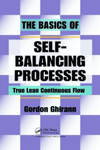Among the many parental clichés we endure as children, my favorite is this: “I suppose if your friends jumped off a cliff, you’d jump off a cliff, too.”
That reprimand could just as easily apply to U.S. OEMs that have outsourced parts-and by extension, domestic manufacturing jobs-to China and other low-cost labor centers without considering the full financial impact of their decision. Over the past decade, many OEMs seemingly sent work offshore just because “everyone else was doing it.”
That excuse didn’t fly with our parents, and it shouldn’t get past savvy supply chain managers, either. According to a 2009 study by Archstone Consulting, 60 percent of manufacturers use only rudimentary calculation methods to determine what it costs them to send work offshore. Their analyses often go no further than simply comparing the U.S. price with the China price. On average, these manufacturers miss some 20 percent of the total costs of offshoring.
Fortunately, a small but determined group of manufacturing professionals and policymakers are trying to stem the tide of offshoring. Leading the charge is Harry Moser, former president of machine tool supplier GF Agie Charmilles and founder of the Reshoring Initiative, a nonprofit organization dedicated to persuading manufacturers to bring work back to the United States from overseas.
The cornerstone of the initiative is a comprehensive spreadsheet that Moser created to help manufacturers calculate the real impact of offshoring on their balance sheets. The spreadsheet covers both tangible costs, such as shipping and packaging, and intangible costs, such as lost business opportunities and intellectual property risks.
You can download the spreadsheet free atwww.reshorenow.org, and you can hear Moser’s pitch for yourself May 4, during ASSEMBLY magazine’s first virtual trade show, Tech ManufactureXPO. Moser will deliver the show’s keynote address at 9 a.m. Eastern time. To learn more about the show, visitwww.techmanufacturexpo.com.
Thankfully, OEMs are starting to get the message, and a growing number are bringing work back to the United States. For example, in 2009, Farouk Systems Inc. moved production of its hair-styling appliances from China to Houston. That same year, General Electric repatriated production of energy-efficient water heaters to its facility in Louisville, KY. And last fall, FormFactor Inc. moved production of its wafer probe cards from Singapore to Livermore, CA.
To be clear, we don’t advocate that OEMs should never go offshore. There are instances when the practice does make financial sense. However, we applaud every manufacturer that has made a reasoned decision to bring assembly back home, and we thank men like Harry Moser for championing the cause of U.S. manufacturing.
Never miss the latest news and trends driving the manufacturing industry
Stay in the know on the latest assembly trends.
JOIN TODAY!Copyright ©2024. All Rights Reserved BNP Media.
Design, CMS, Hosting & Web Development :: ePublishing







